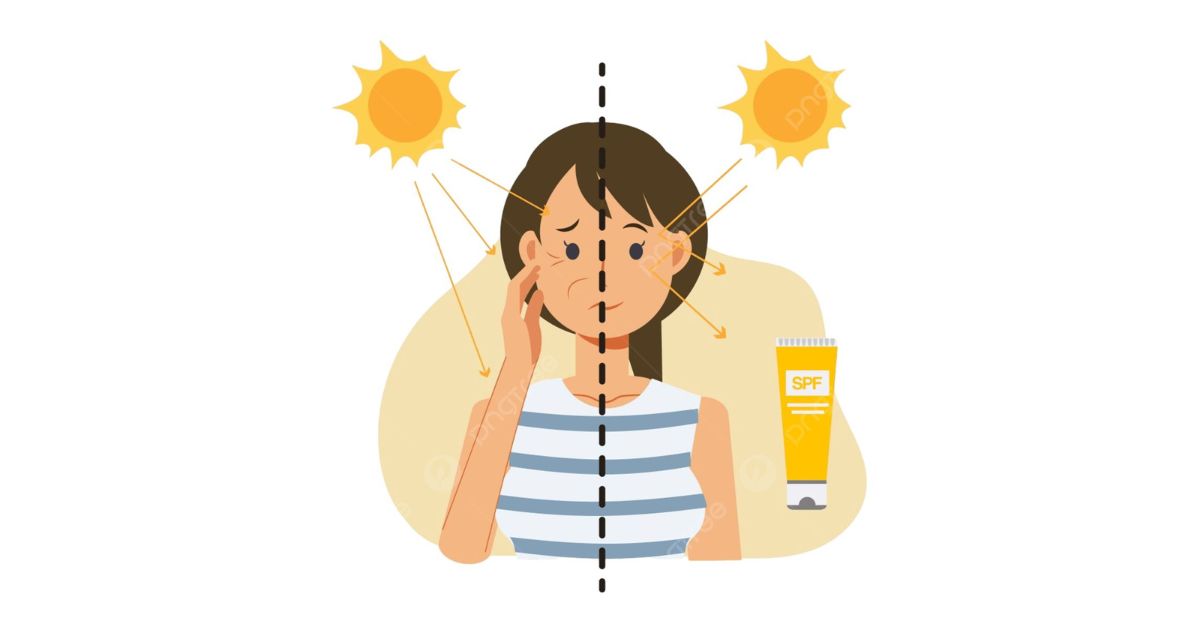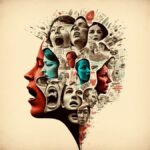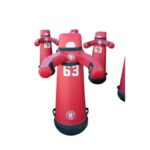In our modern, indoor-centric world, many people spend the majority of their time shielded from natural sunlight. While this may reduce the risk of sunburn or skin cancer, it also limits exposure to a crucial component of sunlight: ultraviolet (UV) radiation. Though often associated with harm, UV light plays essential roles in human health, ecosystems, and even technological applications. When individuals or environments experience insufficient UV exposure, a condition sometimes informally referred to as UVLack, it can lead to a cascade of biological and psychological consequences.
UVLack is not a formally recognized medical diagnosis, but rather a conceptual term used to describe the state of inadequate ultraviolet light exposure—particularly UVB rays—that are necessary for critical physiological processes like vitamin D synthesis. As lifestyles become increasingly urbanized and screen-dominated, awareness of UVLack is growing among health professionals, environmental scientists, and wellness advocates. This article explores the science behind UV light, the implications of its deficiency, and practical strategies to mitigate UVLack without compromising skin safety.
Table of Contents
Understanding Ultraviolet Light
Ultraviolet (UV) light is a form of electromagnetic radiation emitted by the sun, with wavelengths shorter than visible light but longer than X-rays (typically 100–400 nanometers). It is divided into three main types based on wavelength:
- UVA (315–400 nm): Penetrates deep into the skin, contributing to aging and long-term skin damage.
- UVB (280–315 nm): Partially absorbed by the ozone layer; responsible for sunburn and, crucially, the production of vitamin D in the skin.
- UVC (100–280 nm): Almost entirely blocked by Earth’s atmosphere and not naturally encountered at ground level.
While excessive UV exposure is a known risk factor for skin cancer and cataracts, moderate and controlled exposure—especially to UVB—is vital for human health. The body uses UVB photons to convert 7-dehydrocholesterol in the skin into previtamin D3, which then becomes active vitamin D. Without sufficient UVB, this process stalls, potentially leading to vitamin D deficiency—a key manifestation of UVLack.
The Concept of UVLack
UVLack describes a condition where an individual or population receives insufficient ultraviolet radiation—particularly UVB—to support optimal biological functioning. This concept has gained traction as studies reveal widespread vitamin D insufficiency across diverse geographic and demographic groups, even in sunny regions. Contributing factors include:
- Prolonged indoor lifestyles (e.g., office work, remote learning)
- Use of high-SPF sunscreens that block UVB
- Cultural or religious clothing that covers most of the skin
- Living at high latitudes where UVB intensity is low for much of the year
- Air pollution that scatters or absorbs UV rays
Unlike acute deficiencies like scurvy (vitamin C) or beriberi (vitamin B1), UVLack often manifests subtly—through fatigue, mood changes, weakened immunity, or bone pain—making it easy to overlook. Yet its long-term consequences can be significant, affecting everything from skeletal health to mental well-being.
Health Impacts of UVLack
Vitamin D Deficiency
The most direct consequence of UVLack is reduced vitamin D synthesis. Vitamin D is not just a vitamin—it functions as a hormone that regulates over 200 genes. It is essential for:
- Calcium absorption and bone mineralization
- Immune system modulation
- Muscle function
- Cell growth regulation
Chronic vitamin D deficiency, often stemming from prolonged UVLack, is linked to rickets in children, osteomalacia in adults, increased fracture risk, and higher susceptibility to infections like influenza and tuberculosis. Recent research also suggests associations with autoimmune diseases (e.g., multiple sclerosis), cardiovascular conditions, and certain cancers.
Mental Health and Circadian Rhythms
Beyond vitamin D, UV light influences brain chemistry. Sunlight exposure boosts serotonin—a neurotransmitter tied to mood, focus, and calmness. Seasonal Affective Disorder (SAD), a form of depression occurring in darker months, is partly attributed to reduced daylight and UV exposure. While visible light plays a role, some studies indicate UV-specific effects on endorphin release and stress reduction.
Moreover, natural light—including its UV component—helps regulate circadian rhythms by signaling the suprachiasmatic nucleus in the brain. Disrupted rhythms due to UVLack can lead to poor sleep, metabolic issues, and impaired cognitive performance.
Immune Function
Vitamin D derived from UVB exposure enhances the pathogen-fighting effects of monocytes and macrophages—white blood cells critical to immune defense. Low vitamin D levels correlate with increased risk of respiratory infections and may impair vaccine efficacy. In this sense, UVLack indirectly weakens the body’s frontline defenses.
Environmental and Societal Factors Contributing to UVLack
Urbanization and Indoor Living
Modern urban design often prioritizes energy efficiency and climate control over natural light access. Tinted windows, high-rise buildings, and underground transit systems further limit UV exposure. The average office worker may receive less than 10 minutes of direct sunlight per day—far below the 10–30 minutes (depending on skin tone, location, and season) recommended for adequate vitamin D synthesis.
Sunscreen Use and Public Health Messaging
Public health campaigns rightly emphasize sun protection to prevent skin cancer. However, blanket recommendations to “always wear sunscreen” can inadvertently promote UVLack. While sunscreen is essential during prolonged sun exposure, brief, unprotected exposure (e.g., 15 minutes midday sun on arms and legs) is generally safe and beneficial for most people.
Geographic and Seasonal Limitations
Above approximately 37° latitude (north or south), UVB radiation is too weak for vitamin D synthesis during winter months. In cities like London, Boston, or Moscow, residents may experience functional UVLack for 4–6 months annually. This seasonal dip contributes to winter spikes in illness and mood disorders.
Cultural and Behavioral Practices
In some cultures, modest clothing covers nearly all skin, drastically reducing UV exposure. Similarly, fear of skin darkening or aging drives some individuals to avoid the sun entirely. While these choices are valid, they increase reliance on dietary or supplemental vitamin D to compensate for UVLack.
Diagnosing and Measuring UVLack
Since UVLack is not a clinical term, it is assessed indirectly through biomarkers—primarily serum 25-hydroxyvitamin D [25(OH)D] levels:
- Deficient: <20 ng/mL (<50 nmol/L)
- Insufficient: 20–29 ng/mL (50–74 nmol/L)
- Sufficient: 30–100 ng/mL (75–250 nmol/L)
However, vitamin D levels alone don’t capture the full picture. Some researchers advocate for holistic assessments that include lifestyle, sun exposure habits, and symptoms like fatigue or muscle weakness. Wearable UV sensors are emerging as tools to quantify personal UV exposure, offering real-time feedback to help individuals balance sun safety and sufficiency.
Strategies to Address UVLack Safely
Addressing UVLack doesn’t mean abandoning sun protection. Instead, it involves smart, balanced strategies:
1. Timed, Unprotected Sun Exposure
For most people, exposing arms, legs, or back to midday sun for 10–30 minutes (depending on skin pigmentation—darker skin requires longer exposure) two to three times per week can maintain vitamin D levels without increasing skin cancer risk significantly. Avoid sunburn at all costs.
2. Dietary Sources and Supplements
Fatty fish (salmon, mackerel), egg yolks, and fortified foods (milk, cereals) provide dietary vitamin D. However, it’s difficult to meet needs through diet alone. Vitamin D3 supplements (1,000–4,000 IU/day) are widely recommended, especially in winter or for high-risk groups (elderly, dark-skinned individuals, those with malabsorption disorders).
3. UVB Phototherapy
In clinical settings, controlled UVB lamps are used to treat conditions like psoriasis, eczema, and severe vitamin D deficiency. These devices emit narrowband UVB (311 nm), mimicking natural sunlight safely under medical supervision. While not a routine solution for general UVLack, they demonstrate the therapeutic potential of targeted UV exposure.
4. Architectural and Urban Design
Incorporating daylighting strategies—such as skylights, light wells, and reflective surfaces—into homes, schools, and workplaces can increase natural light exposure. “Biophilic design,” which integrates nature into built environments, often includes UV-transmitting glass that allows beneficial rays while blocking UVA.
5. Public Health Education
Reframing sun exposure messaging is crucial. Instead of “avoid the sun,” campaigns could promote “enjoy the sun wisely.” For example: “Get 15 minutes of midday sun without sunscreen, then apply protection if staying out longer.” This nuanced approach acknowledges both risks and benefits.
Debunking Myths About UVLack and Sun Exposure
Several misconceptions hinder effective management of UVLack:
- Myth: “Any sun exposure causes skin cancer.”
Fact: Moderate, non-burning sun exposure is not strongly linked to melanoma and may even be protective through vitamin D and other pathways. - Myth: “Sunscreen completely blocks vitamin D production.”
Fact: While high-SPF sunscreen reduces UVB penetration, most people apply too thinly to block all rays. Brief unprotected exposure remains more reliable for vitamin D synthesis. - Myth: “Tanning beds are a safe alternative.”
Fact: Most tanning beds emit primarily UVA, which doesn’t produce vitamin D and increases skin cancer risk. They are not recommended for addressing UVLack.
The Future of UVLack Awareness
As research evolves, the concept of UVLack may gain formal recognition in public health frameworks. Innovations like smart windows that modulate UV transmission, personalized UV exposure apps, and vitamin D-fortified foods could help bridge the gap between sun safety and sufficiency.
Moreover, integrating UVLack into discussions about holistic health—alongside nutrition, exercise, and sleep—could empower individuals to make informed choices. The goal isn’t maximal sun exposure, but optimal exposure: enough to support biological needs without tipping into harm.
Conclusion
UVLack represents a growing yet underappreciated challenge in our increasingly indoor, sun-averse society. While the dangers of excessive UV radiation are well-documented, the benefits of moderate exposure—particularly for vitamin D synthesis, immune function, and mental health—are equally vital. Ignoring UVLack can lead to silent deficiencies with wide-ranging consequences, from weakened bones to seasonal depression.
Addressing UVLack requires a balanced, evidence-based approach: brief, sensible sun exposure when possible; supplementation when necessary; and a reevaluation of how we design our living and working spaces. Public health messaging must evolve to reflect this duality—protecting against overexposure while promoting the essential benefits of sunlight.
Ultimately, recognizing UVLack as a legitimate concern allows us to harness the power of natural light responsibly. In doing so, we support not just physical health, but emotional resilience and overall well-being. As we navigate the complexities of modern life, let us not forget that humans evolved under the sun—and a little UVLack might be costing us more than we realize. By understanding and mitigating UVLack, we take a proactive step toward healthier, more vibrant lives.












